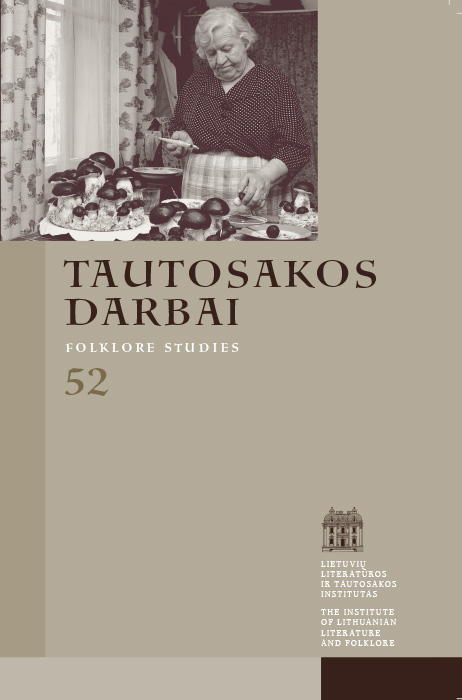Sky in the Ancient Baltic Worldview
Abstract
In the Baltic mythology and folklore, the sky covering the Earth and its bodies – the Sun, Moon, stars and their constellations are among the most prominent archaic images, comprising rather integral mythical celestial world. This article aims at reconstructing the model of the sky and highlighting at least the most outstanding features of this significant universal. The analysis comprises linguistic data preserving the relics of the ancient worldview, the written sources on the Baltic religion and mythology, and the rich and thriving Lithuanian and Latvian folklore tradition.
The Lithuanian word dangus ‘sky’ derives from the verb dengti ‘to cover’. The old Prussians used similar denomination: dangus (acc. dangon, dengon, -an). Latvians, however, use the word debess ‘sky’. This word in Lithuanian denotes the visible atmospheric phenomenon: debesis ‘cloud’. Therefore, only Prussians and Lithuanians had the same lexeme denoting sky, which allows assuming that it was imagined as a certain cosmic cover or lid, placed high above and covering the humans and their earthly living.
The article addresses the following subtopics: the etymology of the word dangus ‘sky’ and the notion of the sky; sky as God; the stony sky; the heavenly “pastures”; the levels of the sky; mediators between sky and Earth; sky as an afterworld; the gates of the sky; and the holiness of the sky.
The author concludes that the Baltic mythology has preserved the image of the sky as the God, the heavenly Father, and as the light enveloping the human world or a mysterious power and energy affecting it. People used to imagine the sky as a certain entirety, as a transcendental boundless ephemeric space comprising the upper sphere of the mythical world. Observation of the sky and the movements of the celestial bodies used to inspire in the observing people feelings of religious kind, along with inevitable reverence manifested in the traditional social customs and rituals. There existed an entire system of taboos related to the sky and the celestial bodies, which also testifies to the sense of holiness attributed to this space.
The reconstructed Baltic images of the sky preserve certain elements of the ancient IndoEuropean worldview. They present an important source for reconstructing not only the Baltic, but also the Indo-European mentality.
Downloads
Most read articles by the same author(s)
- Nijolė Laurinkienė, Mythical Images of the Solar Carriage and Ship: the Heavenly Body in the Course of an Astronomical Day , Tautosakos darbai: Vol. 54 (2017)
- Austė Nakienė, Daiva Račiūnaitė-Vyčinienė, Rokas Sinkevičius, Aušra Žičkienė, Nijolė Laurinkienė, Rūta Žarskienė, Chronicle , Tautosakos darbai: Vol. 53 (2017)
- Nijolė Laurinkienė, Беларускi фальклор: матэрыялы i дасследаваннi: Зборник навуковых прац, выпуск 1, Мiнск: Нацыянальная акадэмiя навук Беларуси, 2014 , Tautosakos darbai: Vol. 47 (2014)
